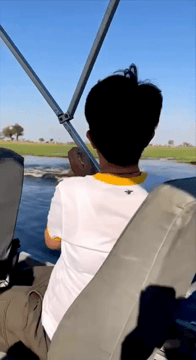
A Night in Hippo Heaven By Donald J Stoner It is said that hippos kill more people in Africa than any other animal (if you exclude mosquitos). But does that qualify them to be classified as dange
Post: 15 December 09:24

Post: 15 December 09:24

Post: 21 February 21:38

Post: 28 August 11:07
Post: 5 March 22:05

Post: 31 August 17:59

Post: 17 August 18:20

Post: 12 April 10:00

Post: 14 January 11:37

Post: 5 September 20:43

Post: 30 July 17:28

Post: 28 August 10:48

Post: 26 August 15:06

Post: 28 July 10:21

Post: 25 July 12:12

Post: 23 July 13:21

Post: 28 August 12:59

Post: 2 September 09:17

Post: 24 July 07:30

Post: 19 June 12:21

Post: 4 September 15:23

Post: 23 July 08:35

Post: 23 July 08:32

Post: 17 July 09:34

Post: 24 June 19:40

Post: 4 September 15:24

Post: 29 July 11:24

Post: 27 August 13:39

Post: 27 August 13:20

Post: 27 August 13:01

Post: 28 July 10:16

Post: 24 July 20:47

Post: 18 June 13:24

Post: 5 September 19:09

Post: 5 September 19:08

Post: 27 August 15:10

Post: 27 August 15:01

Post: 27 August 13:21

Post: 27 August 08:01

Post: 26 August 21:30

Post: 26 August 14:43

Post: 26 August 14:42

Post: 26 August 13:53

Post: 26 August 13:52

Post: 26 August 13:36

Post: 26 August 13:35

Post: 28 July 10:24

Post: 25 July 19:42

Post: 25 July 11:02

Post: 24 July 21:16

Post: 24 July 21:14